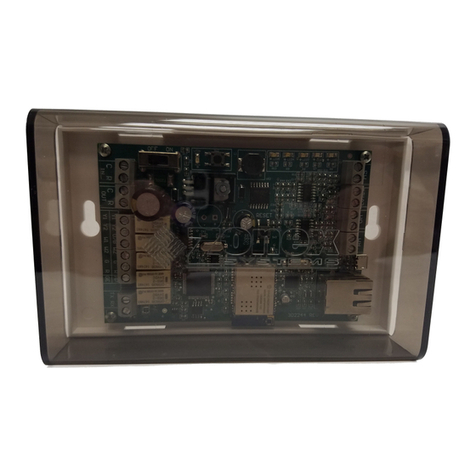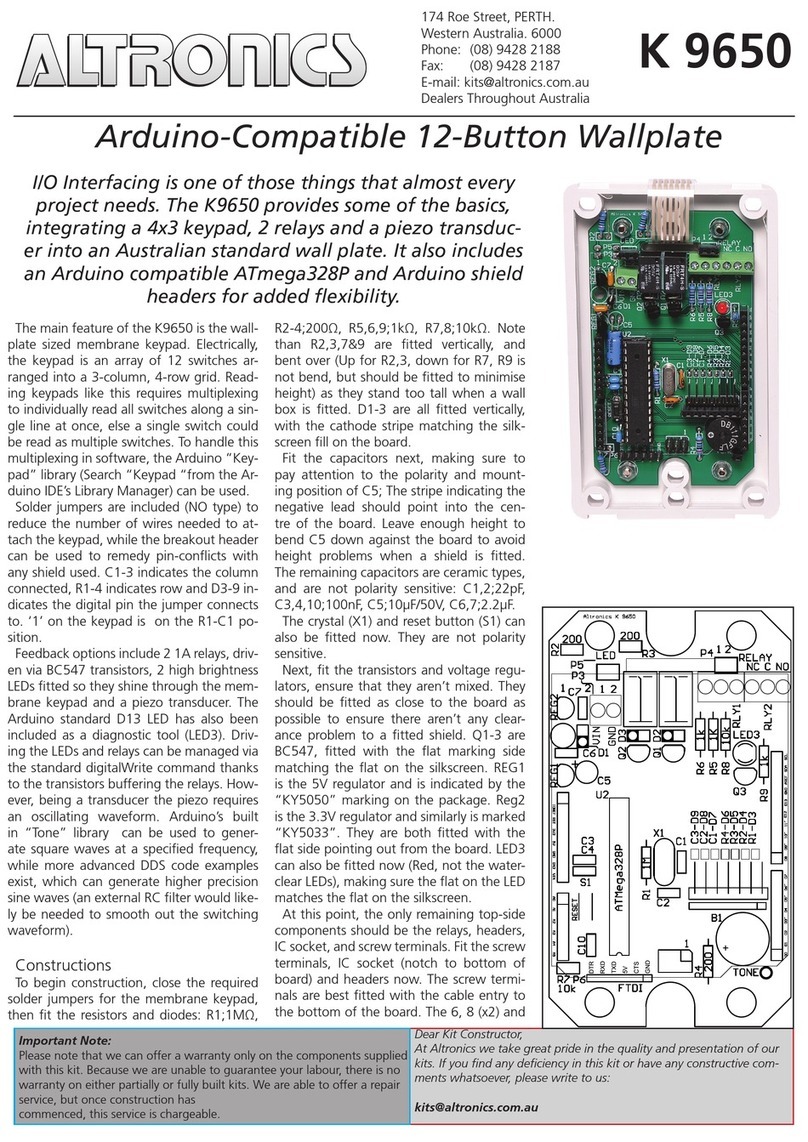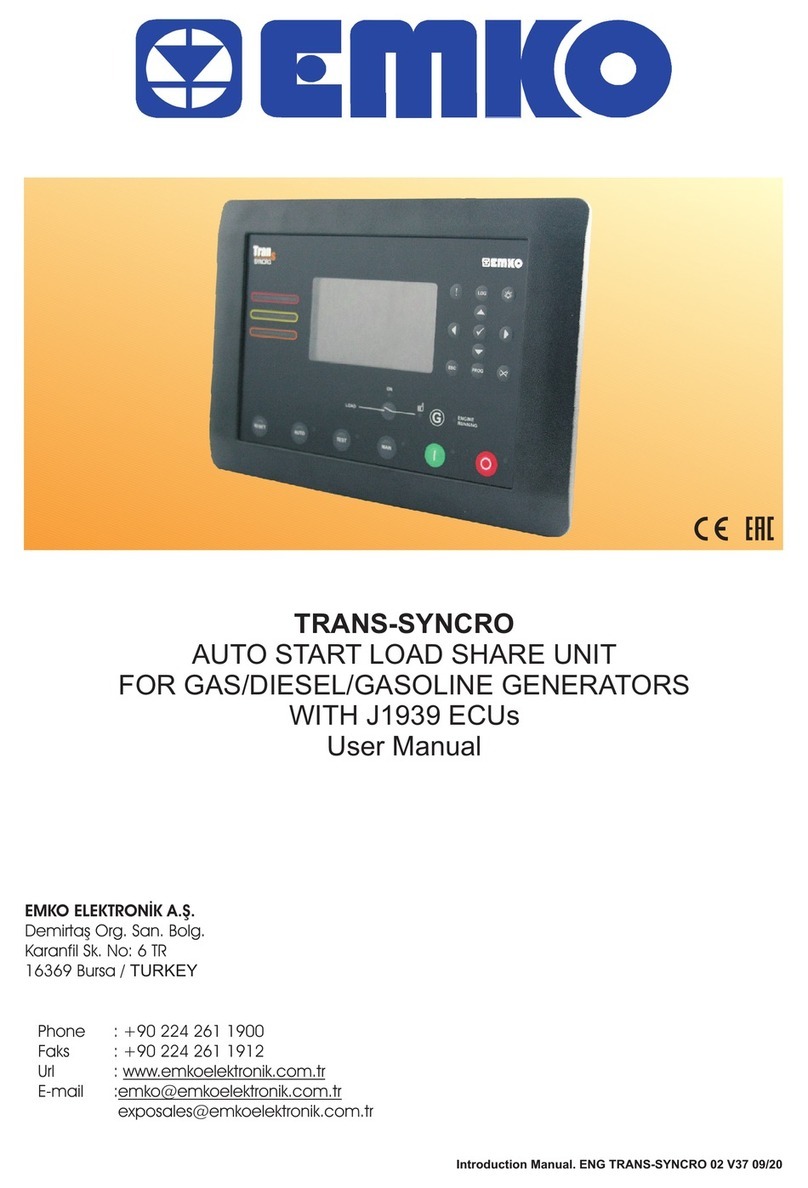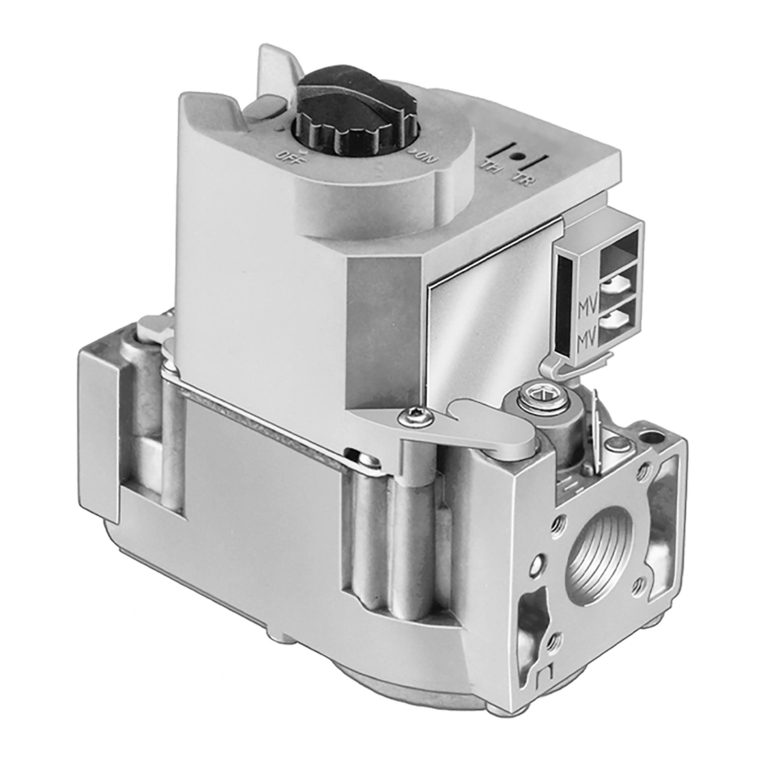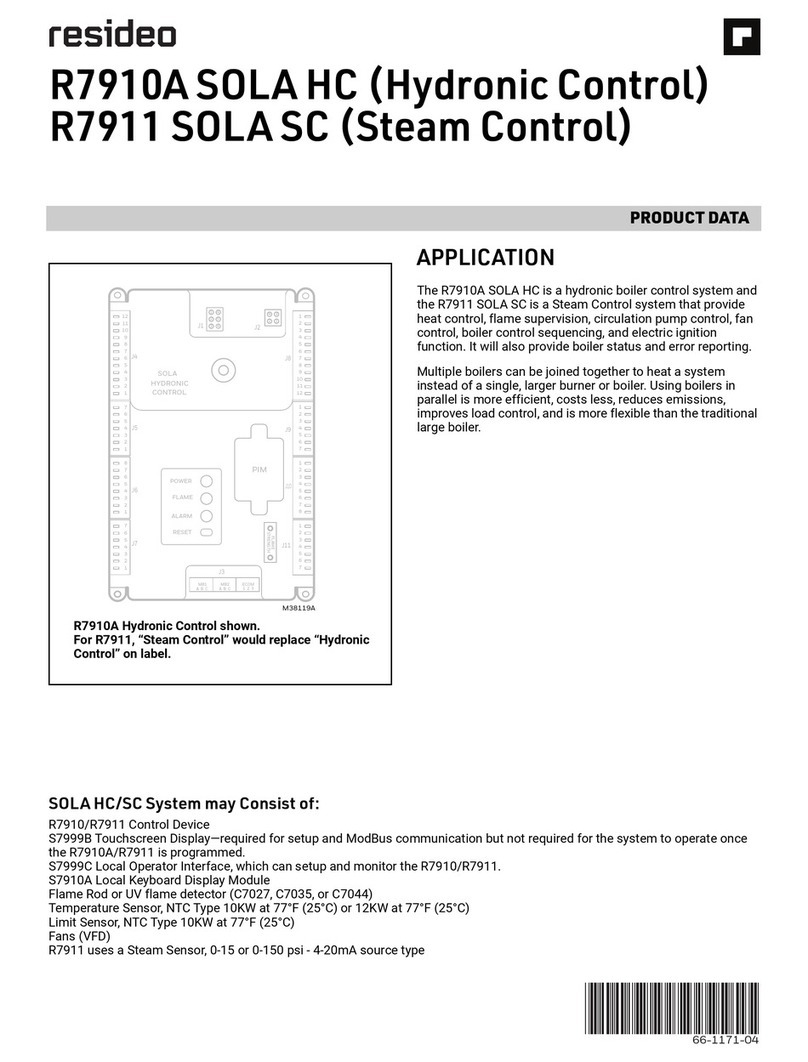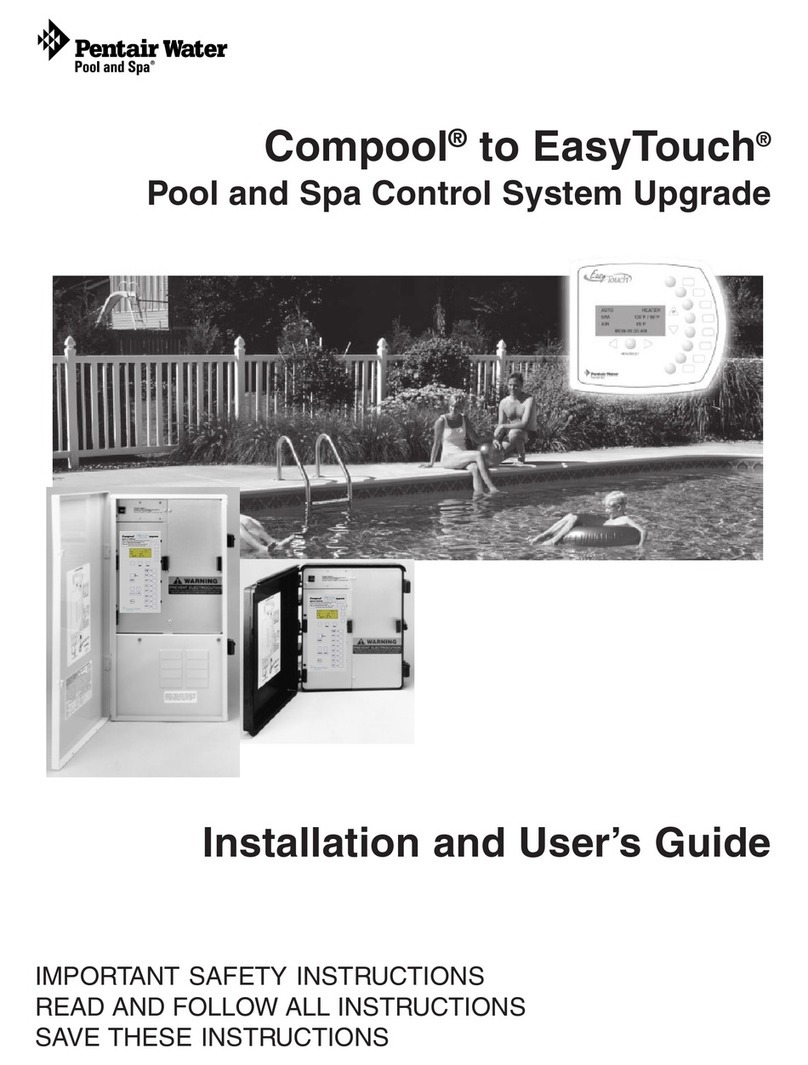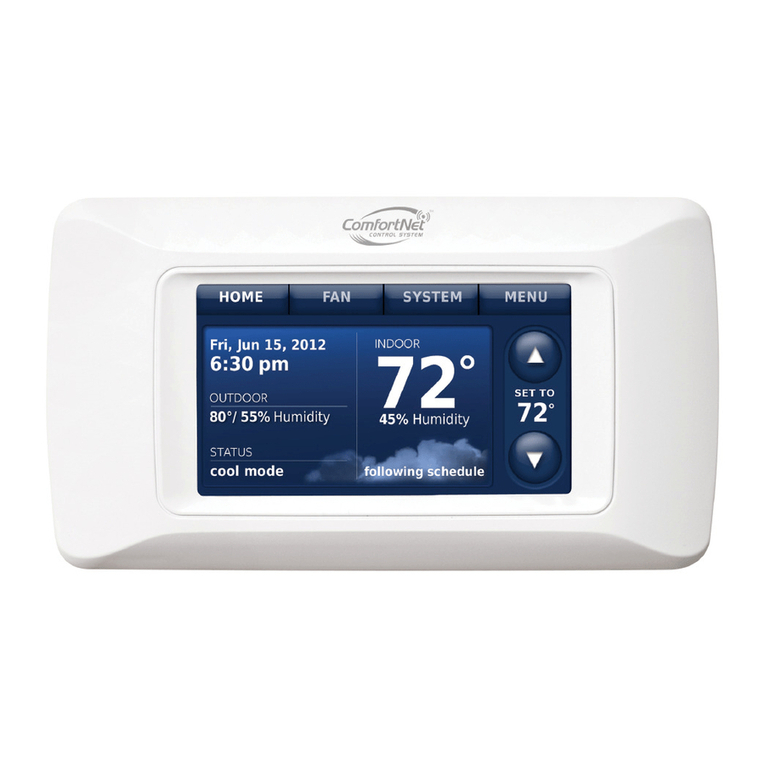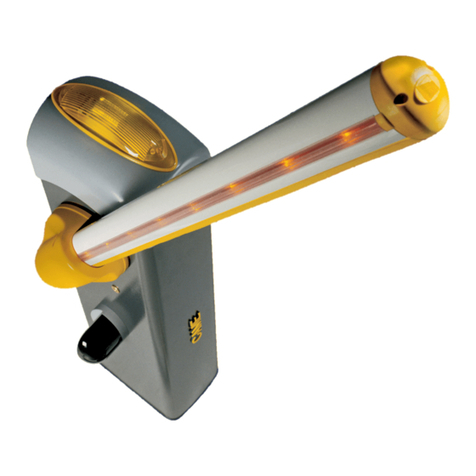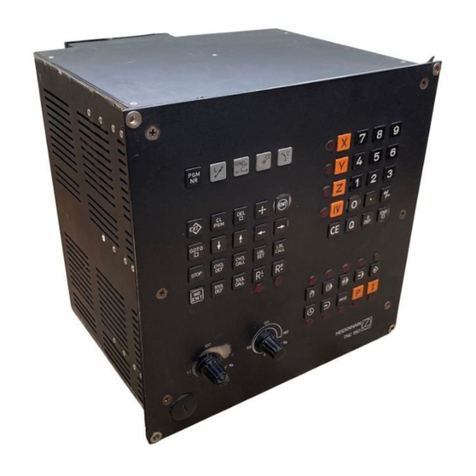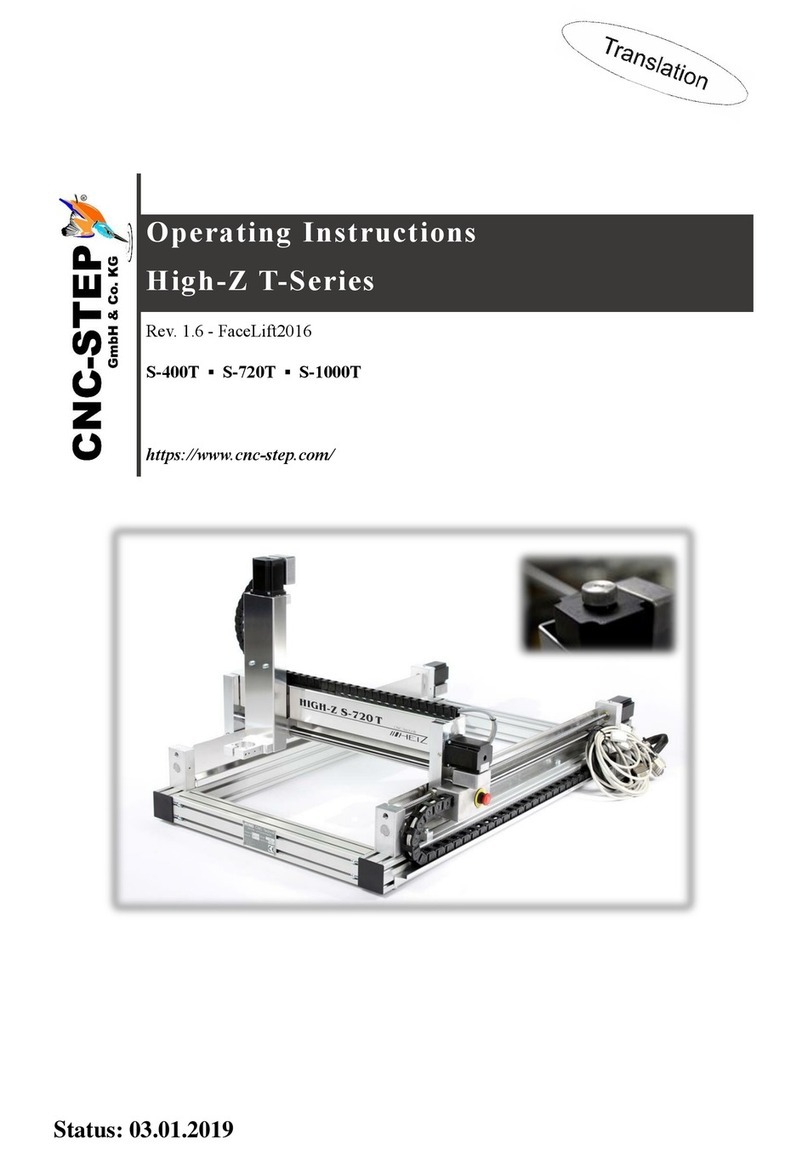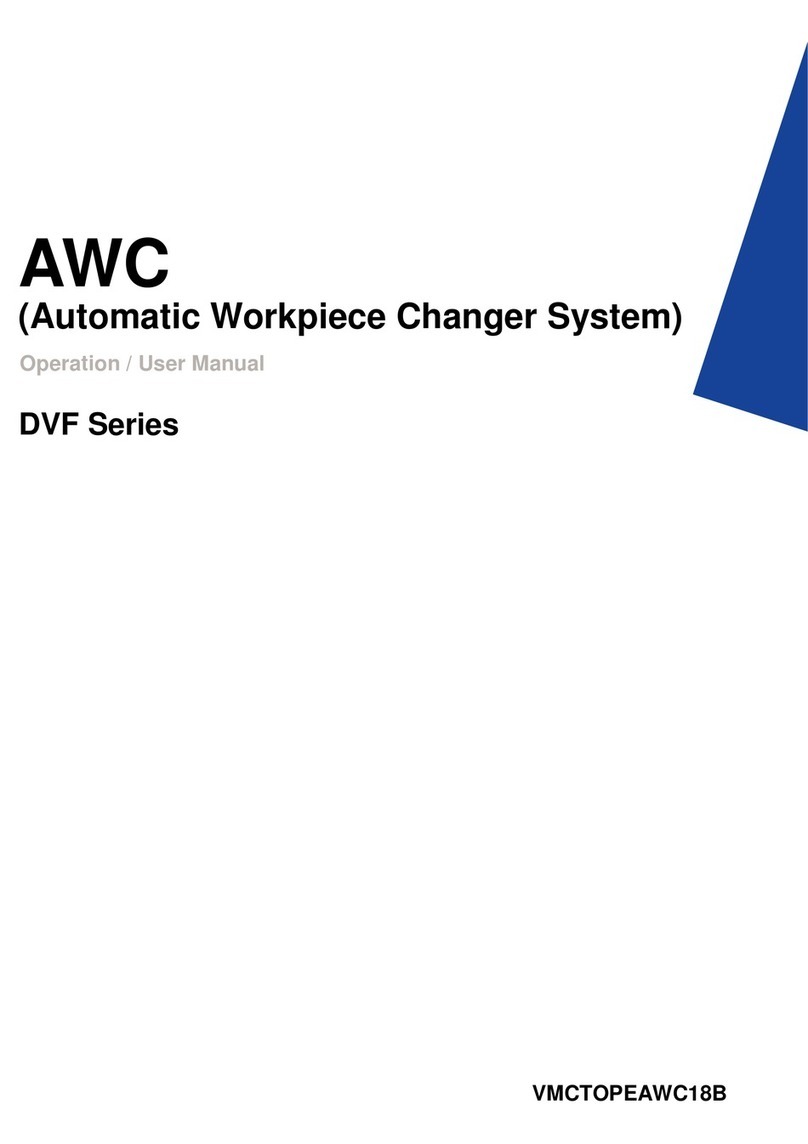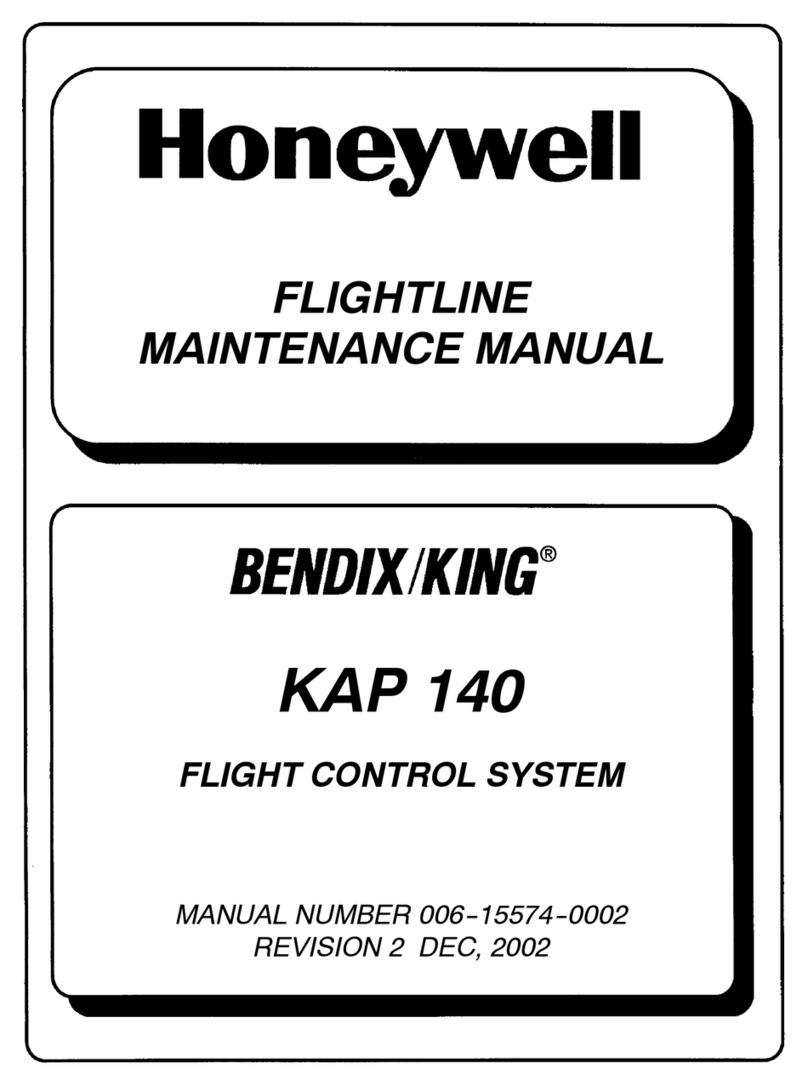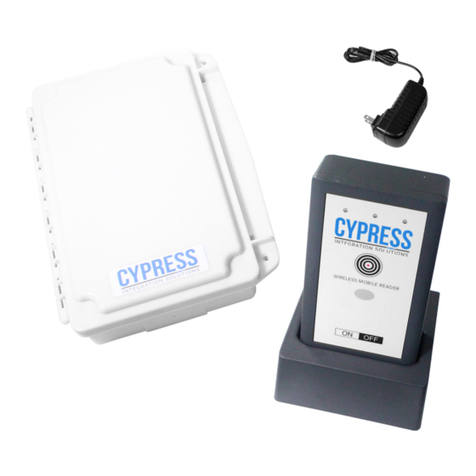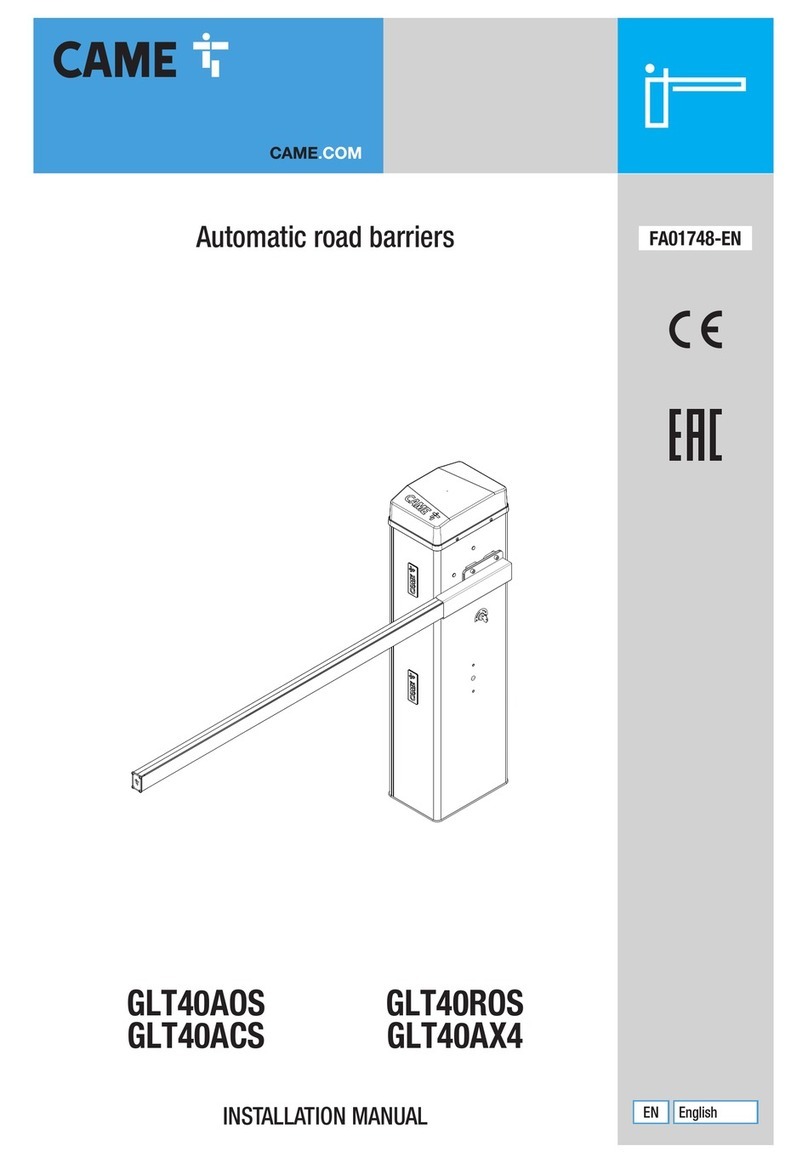
SV9410/SV9420; SV9510/SV9520; SV9610/SV9620 SMARTVALVE™ SYSTEM CONTROLS
69-1058—05 4
Dust or Grease Accumulation
Heavy accumulations of dust or grease can cause the
control to malfunction. Where dust or grease can be a
problem, provide covers for the control to limit
contamination.
Heat
Excessively high temperatures can damage the control.
Make sure the maximum ambient temperature at the
control does not exceed the rating of the control. If the
appliance operates at very high temperatures, use
insulation, shielding, and air circulation, as necessary, to
protect the control. Proper insulation or shielding should
be provided by the appliance manufacturer; verify proper
air circulation is maintained when the appliance is
installed.
Line Voltage Power Supply
• 120 Vac hot supply must be connected to C3, pin 2 on
SV module.
• Appliance chassis must be earth grounded.
• Earth ground and 120V supply neutral lead must be
electrically common at the breaker box.
• Control will not sense flame if these connections are
not correct.
INSTALLATION
When Installing this Product…
1. Read these instructions carefully. Failure to follow
them could damage the product or cause a
hazardous condition.
2. Check the ratings given in the instructions and on
the product to make sure the product is suitable for
your application.
3. Installer must be a trained, experienced service
technician.
4. After installation is complete, check out product
operation as provided in these instructions.
Fire or Explosion Hazard,
Can cause property damage, severe injury or
death.
To avoid dangerous accumulation of fuel gas,
turn off gas supply at the appliance service valve
before starting installation, and perform Gas Leak
Test after completion of installation.
Electrical Shock Hazard.
Can cause severe injury, death, or property
damage.
Disconnect power supply before wiring to prevent
electrical shock or equipment damage.
IMPORTANT
Always install a sediment trap in gas supply line
to prevent contamination of ignition system
control.
Equipment Damage Hazard.
Improper wiring can damage equipment.
Never apply a jumper across or short the
thermostat, 24V hot or 24V common terminal in
the SV9410/SV9420; SV9510/SV9520;
SV9610/SV9620 wiring harness. This can burn
out the heat anticipator in the thermostat or
damage the system transformer.
Follow the appliance manufacturer instructions if
available; otherwise, use these instructions as a guide.
Converting Ignition System Control
from Natural Gas to LP Gas
Application (or LP Gas to Natural
Gas Application)
Fire or Explosion Hazard.
Can cause property damage, severe injury or
death.
Do NOT attempt to convert step-opening models
(SV9410P/SV9420P; SV9510P/SV9520P;
SV9610P/SV9620P). Always change the main
burner orifices when converting from natural to
LP gas or from LP to natural gas. Follow
appliance manufacturer specifications and
instructions.
Ignition system controls are factory-set for natural (and
manufactured) or LP gas. Do not attempt to use an
ignition system control set for natural (manufactured)
gas on LP gas, or an ignition system control set for LP
gas on natural (manufactured) gas.
Ignition system controls with standard or slow opening
regulators (SV9410M,H/SV9420M,H,K,S;
SV9510M,H/ SV9520M,H, K, S;
SV9610M,H/SV9620M,H, K, S) can be converted from one
gas to the other with a conversion kit (ordered
separately). Order part no. 393691 to convert from
natural (manufactured) to LP gas; order part no. 394588
to convert from LP to natural (manufactured) gas.
Two-stage ignition system controls (those with N and Q
suffix letters) can be converted using a conversion kit
(ordered separately). Order part number 396021 to
convert from natural (manufactured) to LP gas; order
part number 396025 to convert from LP to natural
(manufactured) gas.
IMPORTANT
Ignition system controls with step-opening
regulators (SV9510P/SV9520P;
SV9610P/SV9620P) CANNOT be
field-converted to LP or natural gas.
Install Adapters To Control
If adapters are being installed on the control, mount them
as follows:
Flanges
1. Choose the appropriate flange for your application.
2. Remove the seal over the ignition system control
inlet or outlet.
